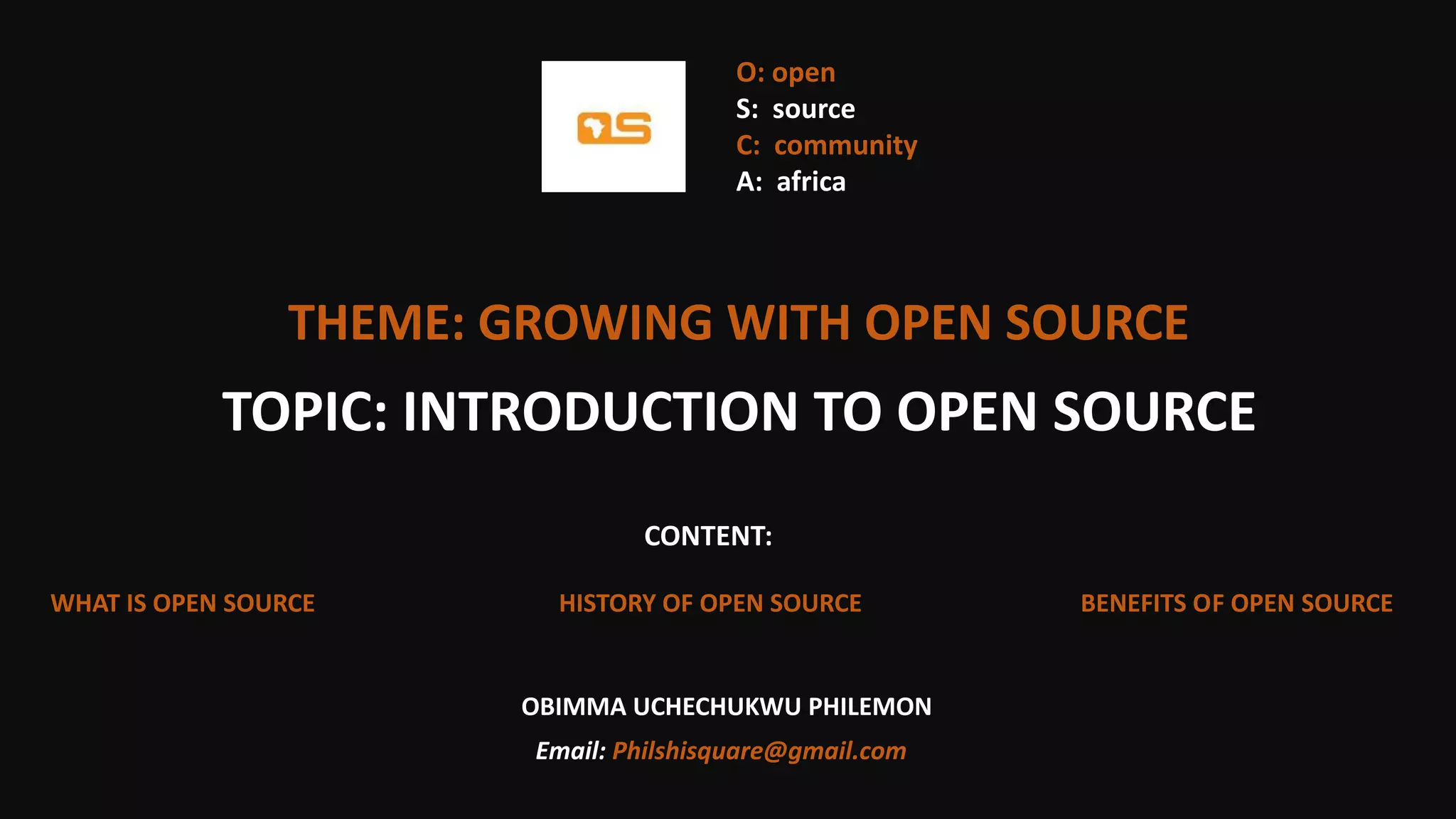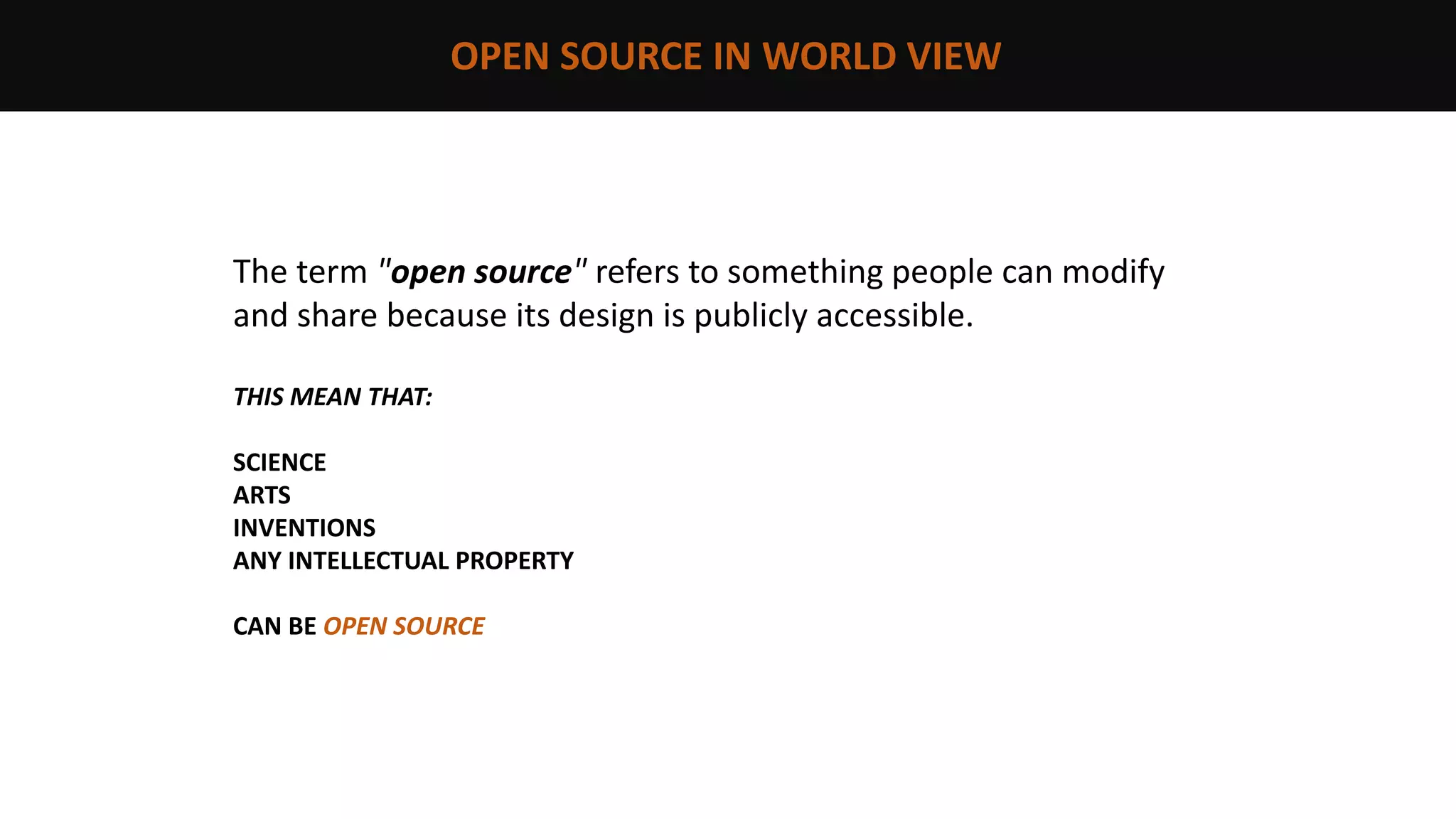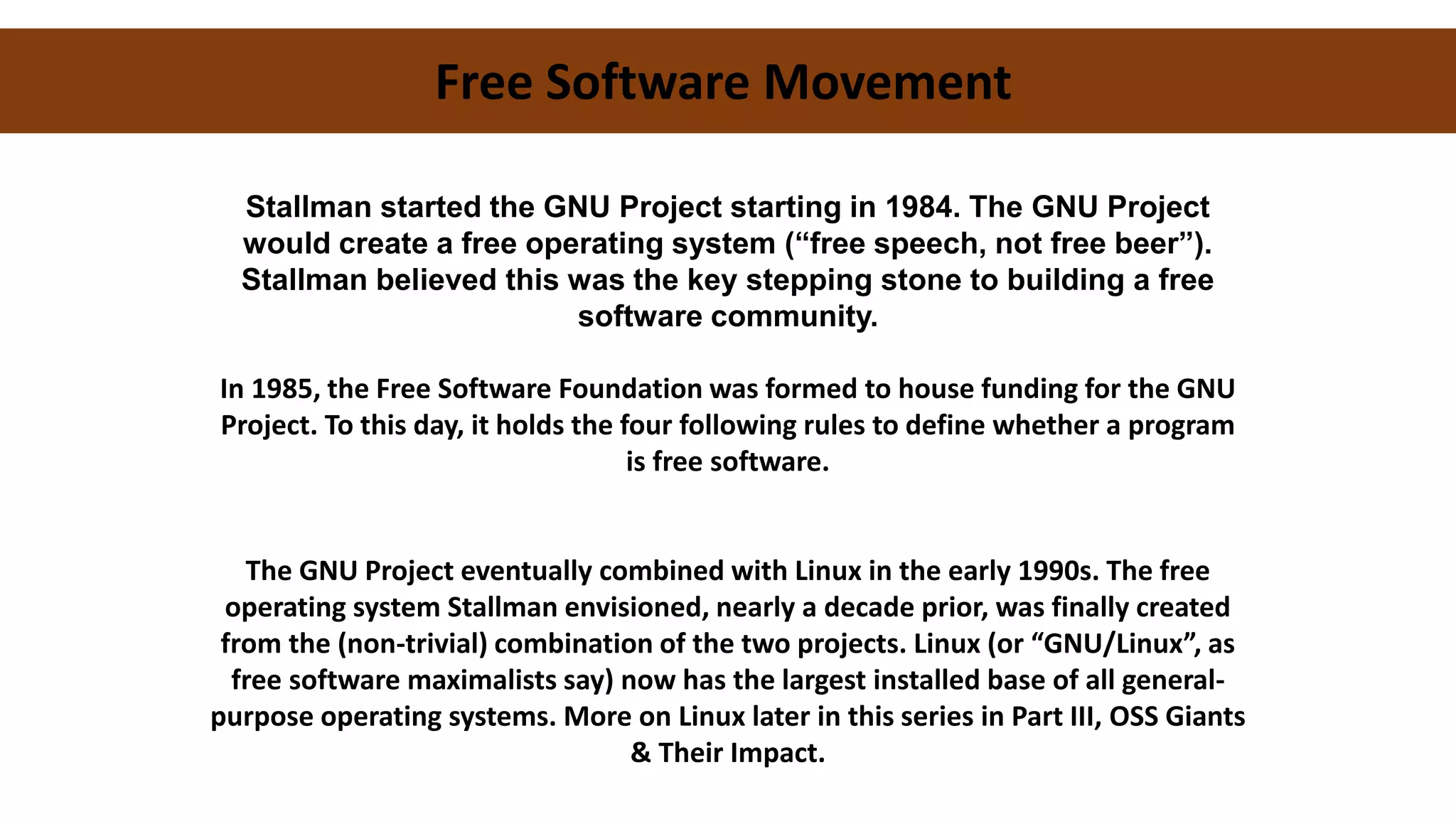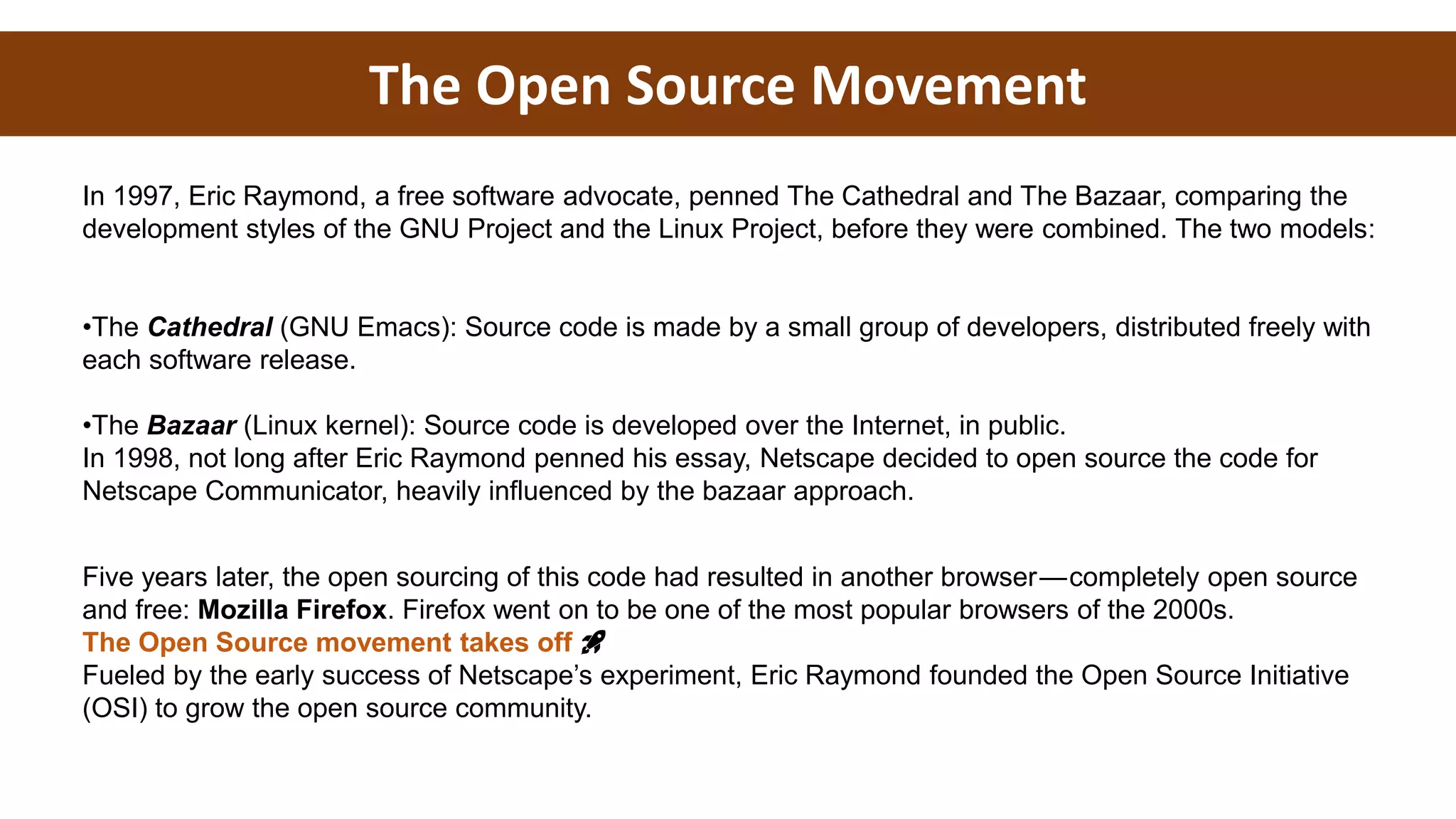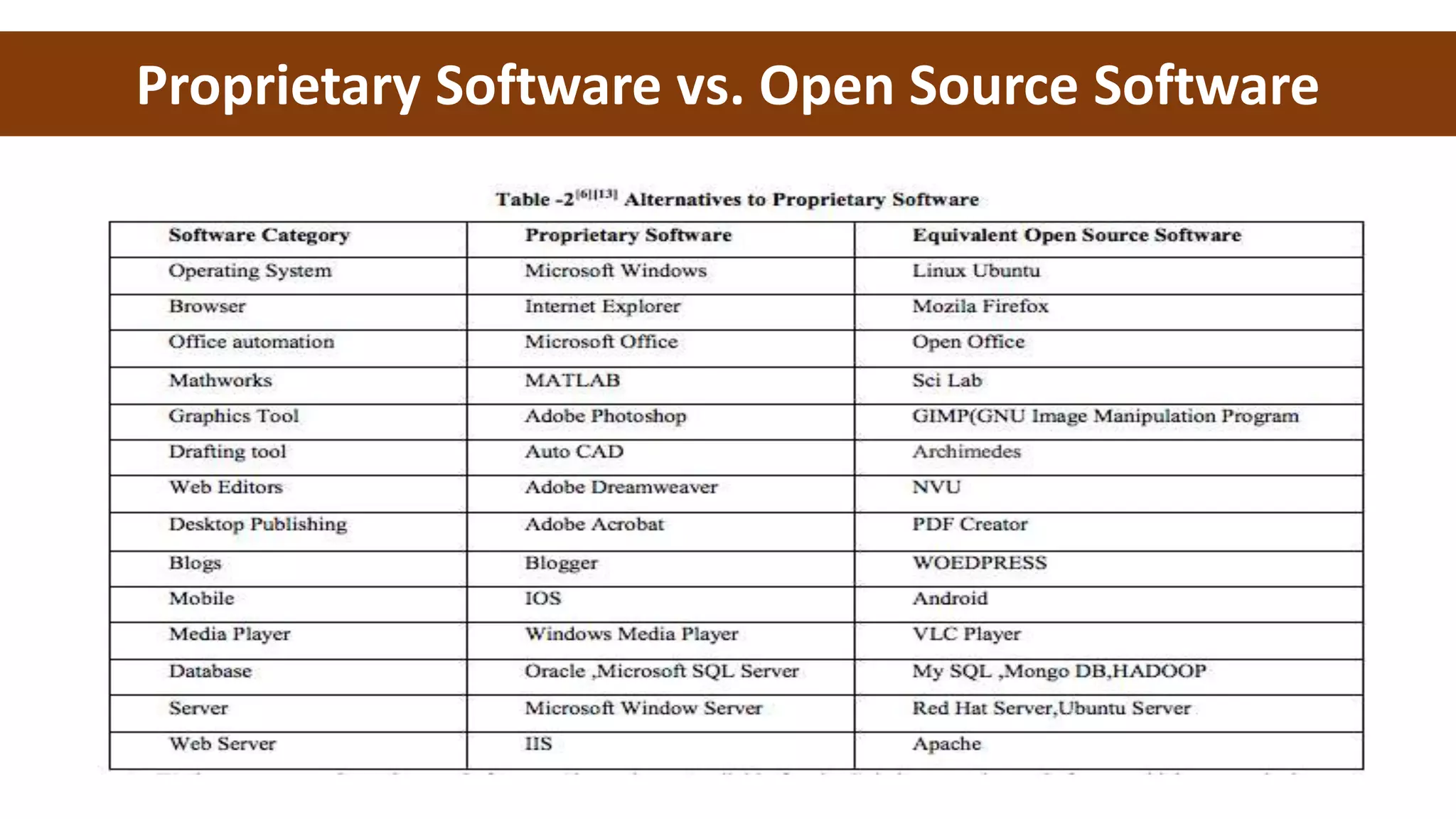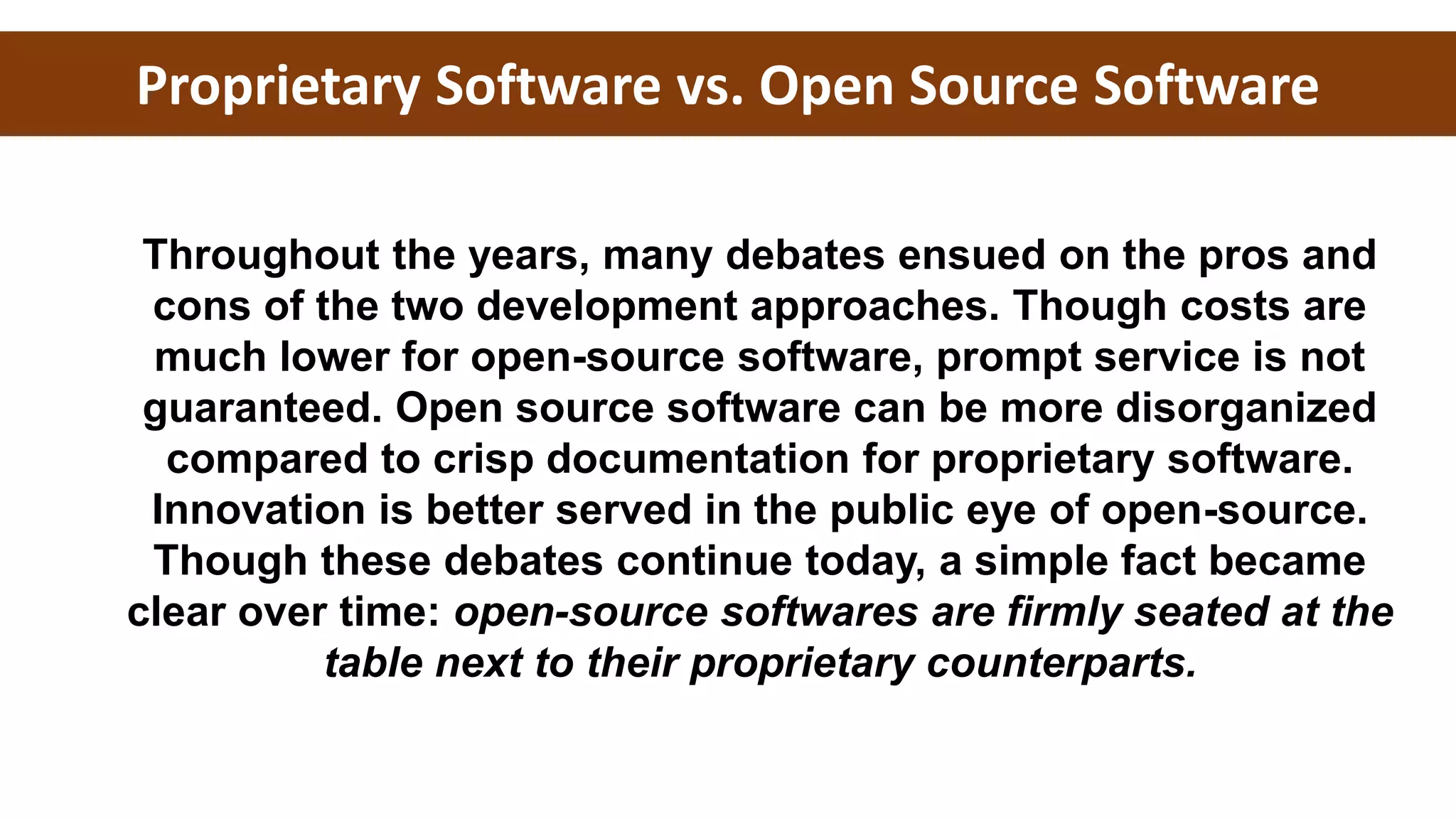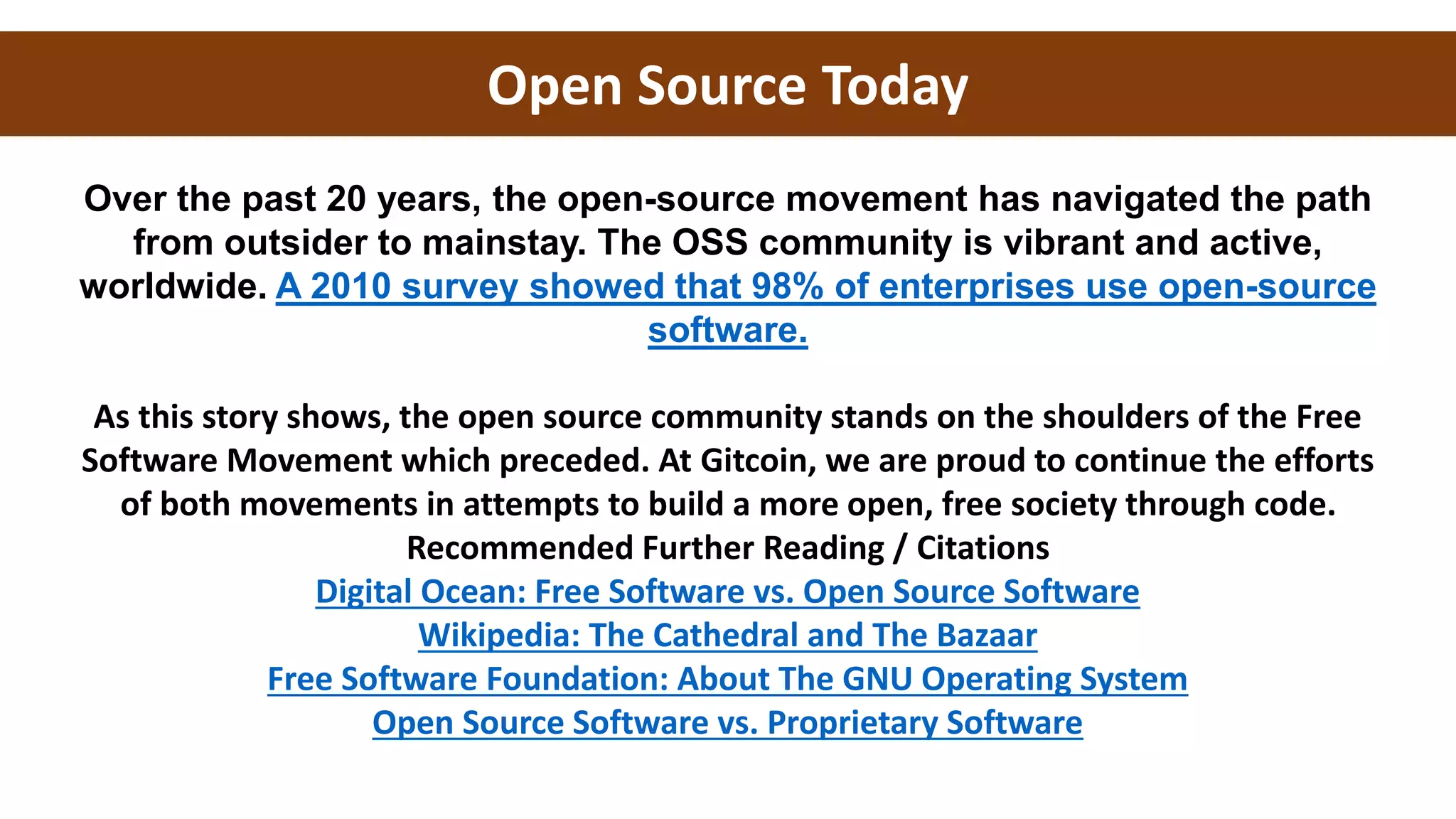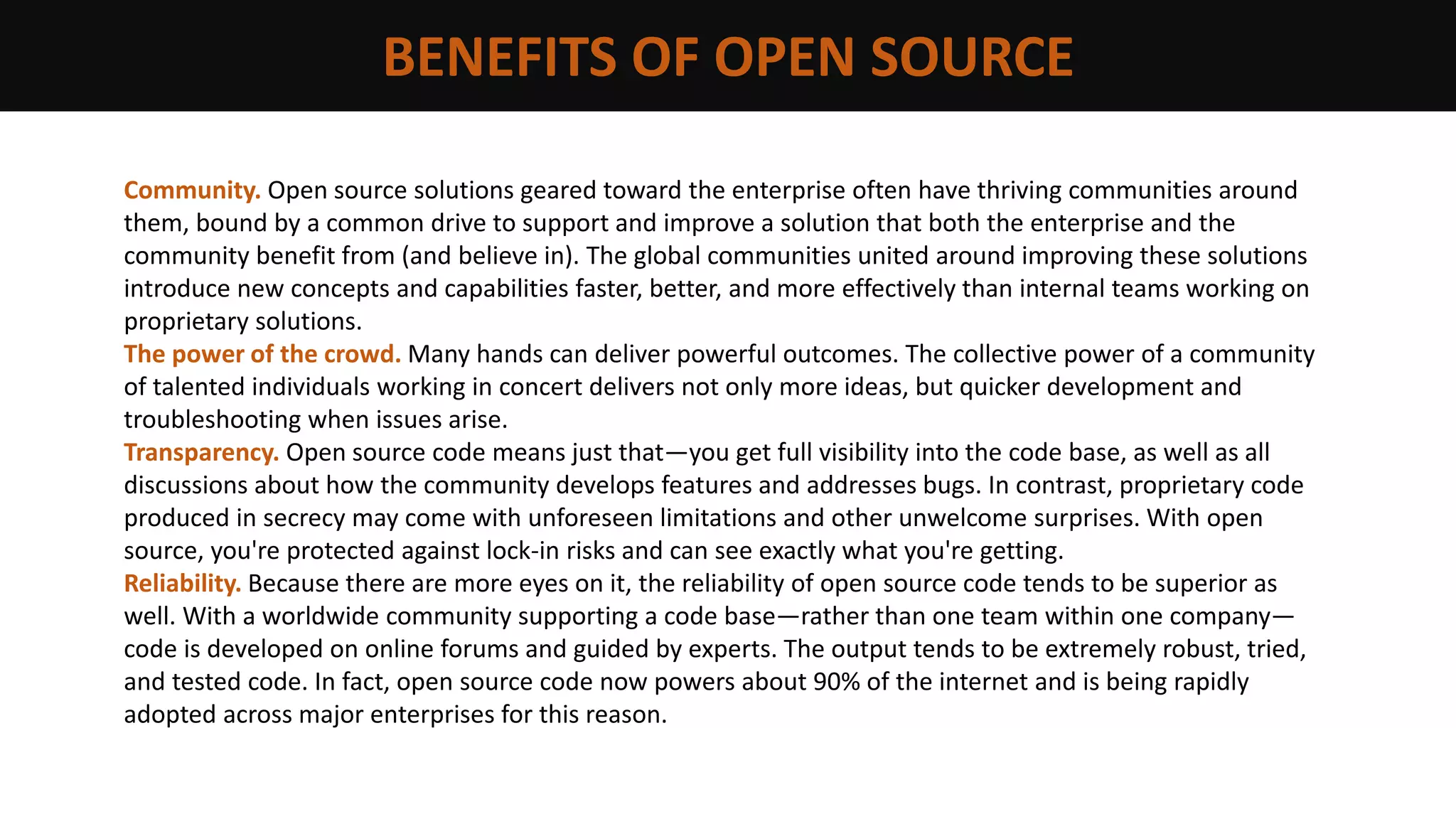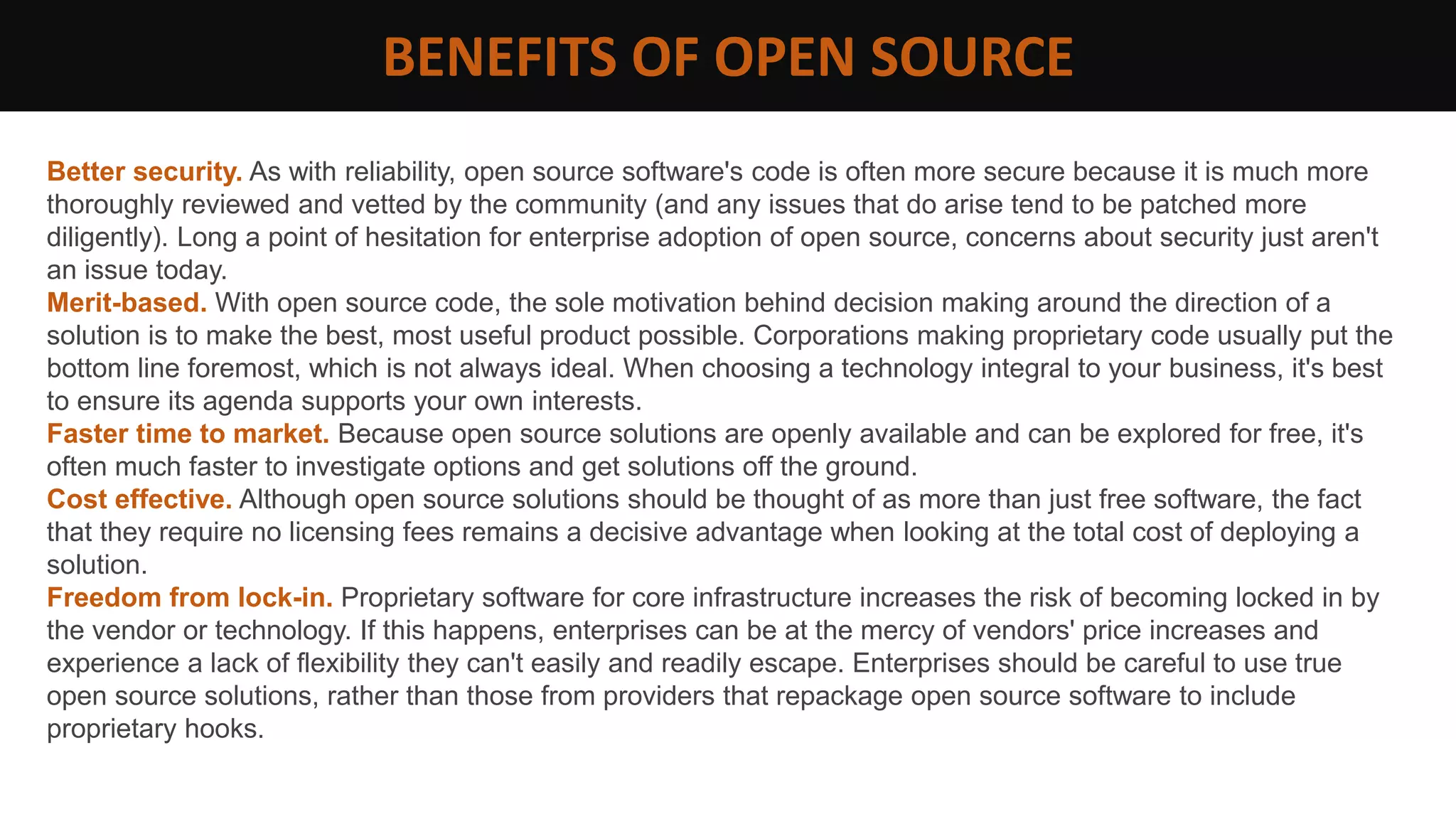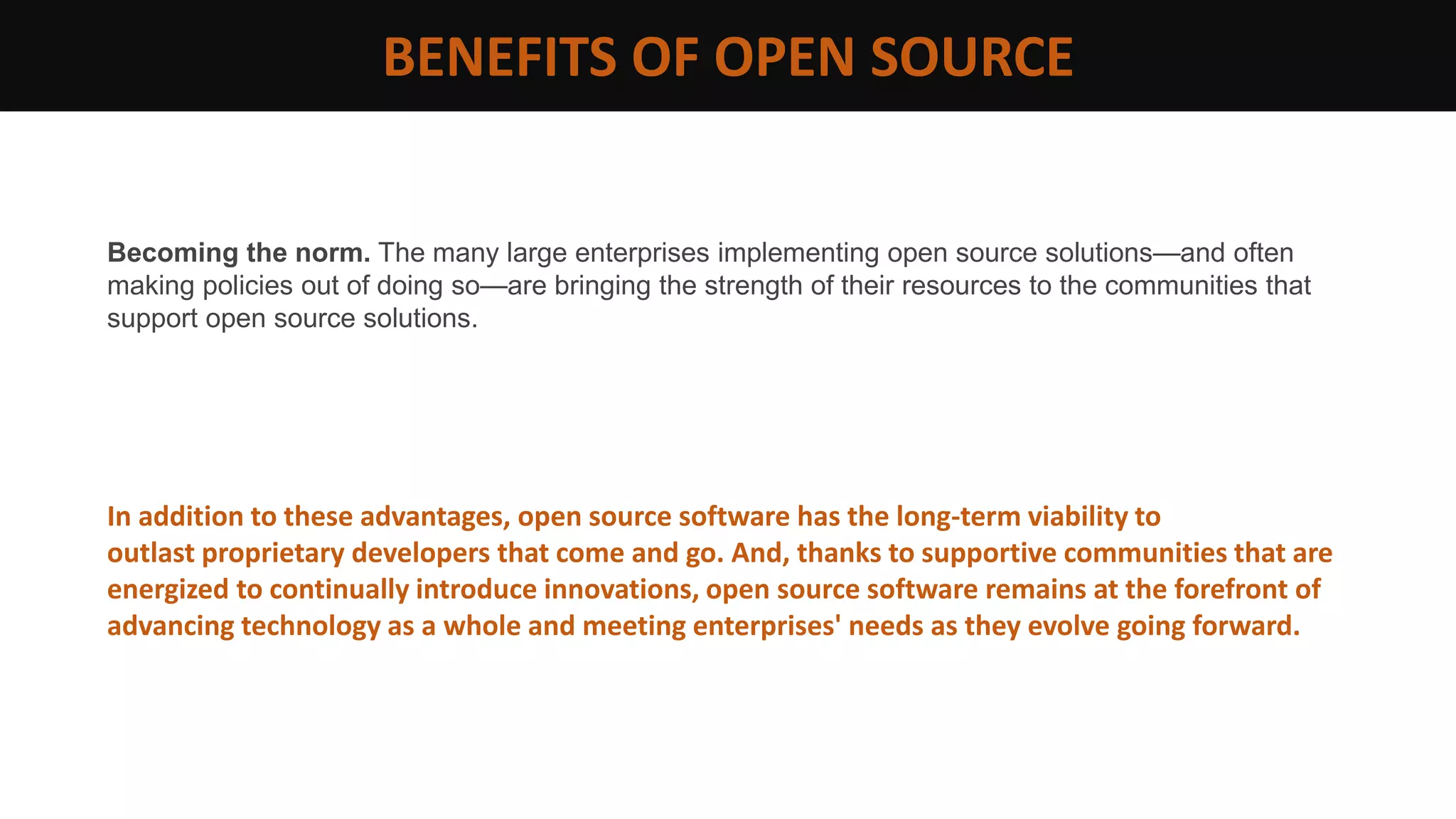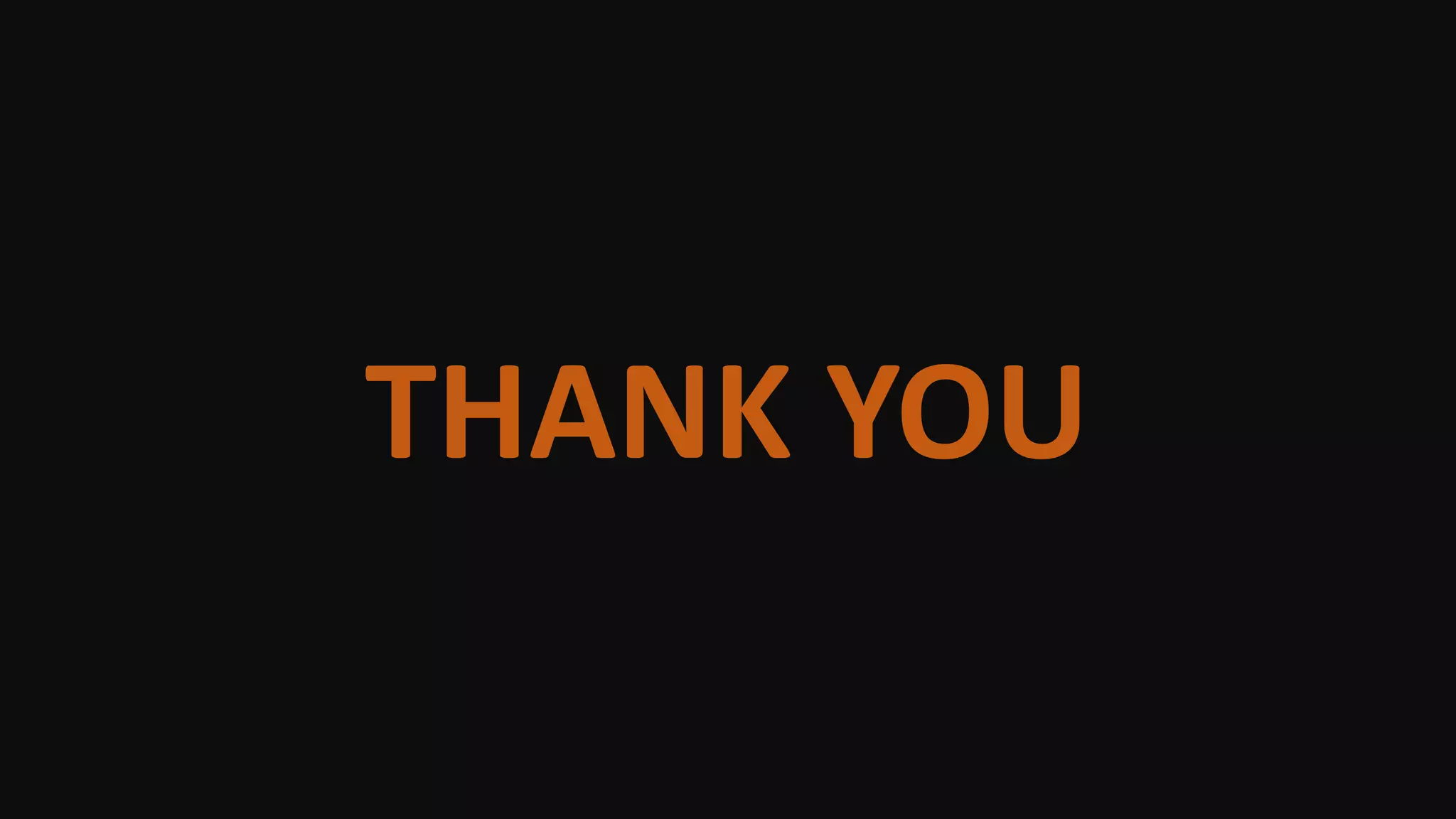This document provides an introduction to open source software. It discusses the history of open source beginning with software sharing at MIT in the 1970s. It describes Richard Stallman founding the Free Software Movement in response to proprietary software taking over. The Open Source movement began in the late 1990s. Today, open source software is widely adopted due to benefits like community support, transparency, reliability, and lower costs compared to proprietary software.
